Archived Water Damage Blog Posts
Is Water Damage Common During Home Renovations?
6/13/2024 (Permalink)
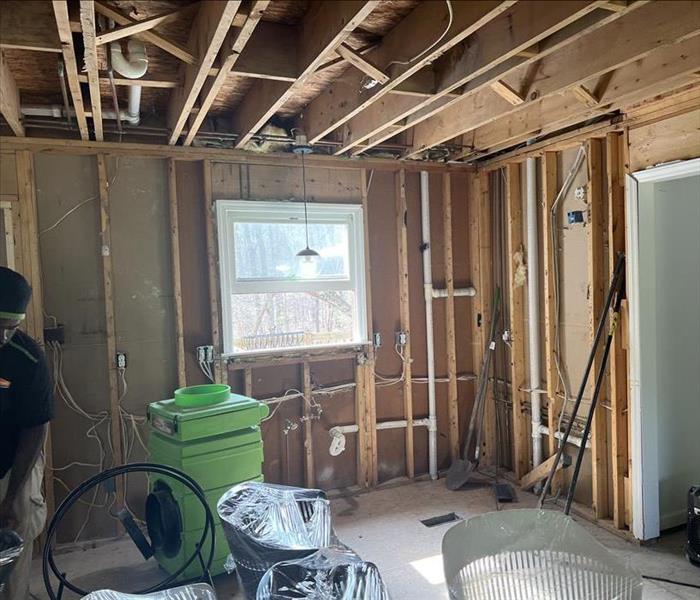 Don't hesitate to contact SERVPRO of Winston Salem North for prompt assistance and restoration services.
Don't hesitate to contact SERVPRO of Winston Salem North for prompt assistance and restoration services.
When embarking on home renovations, whether it's a simple upgrade or a major overhaul, the last thing you might expect is water damage. However, it's more common than you might think. Understanding the potential risks and taking proactive measures can help you navigate your renovation project smoothly and avoid expensive water damage issues. Let's explore why water damage occurs during home renovations and how you can prevent it.
Plumbing Mishaps
One of the most common causes of water damage during home renovations is plumbing mishaps. Whether you're installing new fixtures, rerouting pipes, or upgrading your plumbing system, there's a risk of leaks, burst pipes, or improperly connected fittings. Even a small plumbing error can lead to significant water damage if not addressed promptly.
Roofing Issues
Renovations that involve roof repairs, replacements, or additions can also pose a risk of water damage. Improperly installed roofing materials, inadequate flashing, or overlooked roof punctures can allow water to infiltrate your home, leading to leaks, ceiling stains, and structural damage.
Bathroom and Kitchen Remodels
Bathroom and kitchen renovations are notorious for water-related challenges. Installing new plumbing fixtures, such as sinks, toilets, showers, and dishwashers, requires precision and careful sealing to prevent leaks. Additionally, waterproofing measures around wet areas like showers and tubs are essential to prevent water intrusion into surrounding structures.
Foundation and Basement Work
Renovations involving foundation repairs, basement finishing, or waterproofing can also increase the risk of water damage. Excavation work near the foundation, improper grading, or inadequate drainage systems can lead to water seepage, basement flooding, and moisture problems.
Weather Events
While not directly related to renovation activities, weather events can worsen water damage risks during home renovations. Heavy rainstorms, hurricanes, or unexpected floods can expose vulnerabilities in your home's exterior, such as compromised roofing, windows, or siding, leading to water leaks and damage.
Preventing Water Damage During Home Renovations
- Hire Licensed Professionals: When tackling renovation projects involving plumbing, roofing, or structural work, always hire licensed contractors with experience in their respective fields.
- Conduct Proper Planning: Before starting any renovation project, thoroughly assess your home's current condition, identify potential water damage risks, and develop a detailed renovation plan that includes waterproofing measures.
- Use Quality Materials: Invest in high-quality building materials, plumbing fixtures, and waterproofing products to ensure durability and longevity.
- Regular Inspections: Schedule regular inspections throughout the renovation process to catch any potential water damage issues early and address them promptly.
- Stay Vigilant: Keep an eye out for signs of water damage, such as leaks, dampness, stains, or musty odors, and address them immediately to prevent further damage.
By understanding the common causes of water damage during home renovations and implementing proactive measures to mitigate risks, you can protect your home and ensure a successful renovation project. If water damage does occur despite your best efforts, don't hesitate to contact a professional water damage restoration company like SERVPRO of Winston Salem North for prompt assistance and restoration services.
Restoring Your Carpet After a Flood: Can It Be Saved?
2/14/2024 (Permalink)
Floods are distressing experiences that can wreak havoc on your home, causing significant damage to your belongings. Among the many casualties of a flood, your carpet often bears the brunt of the water damage. The big question that arises in such a situation is whether your carpet can be salvaged after a flood or if it's beyond repair.
The impact of flooding on carpets can vary depending on several factors such as the type of flooding (clean water, greywater, or black water), the duration of exposure to water, and the materials used in the carpet's construction. Let's delve into this matter further to understand the possibilities and steps you can take to potentially save your flooded carpet.
Assess the Damage
The first step after a flood is to assess the extent of the damage to your carpet. If the flooding involved clean water (like from a burst pipe), there might be a chance to salvage the carpet. However, if the water is contaminated (greywater from appliances or sewage) or the flooding persists for an extended period, restoration becomes more challenging.
Act Quickly
Time is of the essence when it comes to saving a waterlogged carpet. The longer the carpet remains wet, the higher the chances of mold growth and permanent damage. Start the drying process as soon as it's safe to enter the flooded area.
Steps to Attempt Salvaging Your Carpet
- Ensure that the electricity is turned off before entering the flooded area to prevent electrical hazards.
- Use a wet/dry vacuum or pumps to extract as much water as possible from the carpet and the underlying padding.
- If the padding is soaked, it's usually recommended to discard it, as it's difficult to dry and can harbor mold. Lift the carpet gently to allow airflow underneath.
- Use fans, dehumidifiers, and open windows to promote air circulation and aid in the drying process. This may take several days.
- After drying, thoroughly clean and disinfect the carpet to prevent mold growth and eliminate any potential contaminants.
When to Seek Professional Help
In many cases, DIY efforts might not be sufficient, especially if the floodwater was contaminated or the damage extensive. Consulting a professional water damage restoration service, like SERVPRO of Winston/Salem, is advisable as they have the expertise, specialized equipment, and experience to properly assess the situation and perform thorough restoration.
Considerations and Final Thoughts
Check your homeowner's insurance policy as it may cover the cost of water damage restoration, including carpet replacement. It's also important to remember that floodwater can contain harmful bacteria and contaminants. Prioritize your safety and consider wearing protective gear when dealing with a flooded area.
In conclusion, while salvaging a carpet after a flood is possible in certain situations, it's essential to act swiftly, prioritize safety, and assess the extent of damage accurately. Professional assistance might be necessary for effective restoration, and in some cases, replacing the carpet might be the safest and most practical option. Remember, your health and safety should be paramount when dealing with water-damaged areas in your home.
If you need flood damage cleanup and restoration, don’t hesitate to reach out to our SERVPRO® team today! We are always here to help.
Water Damage: Understanding the Causes, Effects, and Solutions
10/17/2023 (Permalink)
Water damage is a common and costly issue that affects countless homes and businesses worldwide. Whether caused by natural disasters, plumbing failures, or structural issues, the consequences of water damage can be devastating. In this blog, we will explore the various causes of water damage, understand its effects on properties and belongings, and provide actionable solutions to prevent and mitigate water damage effectively.
Causes of Water Damage
Water damage can stem from a multitude of sources. Heavy rainfall, flash floods, and storm surges are natural causes that can lead to widespread water damage. Plumbing failures, such as burst pipes, leaky faucets, and faulty water heaters, are also common culprits. Additionally, structural issues like roof leaks, foundation cracks, and poorly sealed windows can allow water to seep into buildings. Understanding the causes is crucial in preventing water damage and taking necessary precautions to safeguard properties.
Effects of Water Damage
The effects of water damage can be extensive and far-reaching. Immediate consequences include structural damage to walls, floors, and ceilings, as well as ruined furniture, documents, and personal belongings. Lingering moisture can promote the growth of mold and mildew, which not only deteriorates the building's integrity but also poses risks. Water damage can also disrupt electrical systems, creating fire hazards and potential electrocution risks. Additionally, the increased humidity resulting from water damage can affect the indoor air quality, leading to respiratory issues and exacerbating allergies. Recognizing the effects of water damage is crucial in comprehending the urgency and severity of the situation.
Solutions for Water Damage Prevention and Mitigation
Preventive measures are key to minimizing the risks and effects of water damage. Regular maintenance and inspections can detect potential issues early on and allow for timely repairs. Ensure adequate drainage systems and well-functioning gutters to divert water away from the building. Install sump pumps and water alarms to detect and ward off flood-related issues. Properly insulate pipes, seal windows and doors, and reinforce vulnerable areas to prevent leaks. In cases of severe water damage, immediate action is vital. Professional water extraction, drying, and restoration services can mitigate further damage and salvage affected areas. Being prepared with insurance coverage specific to water damage can also help offset the financial burden of repairs.
Thus, it is crucial for homeowners and businesses to not only focus on immediate mitigation but also invest in proper preventive measures to avoid the long-term repercussions of water damage. It is important to note that water damage can have long-term implications beyond the immediate physical and financial consequences. Understanding the causes, effects, and solutions for water damage empowers homeowners and businesses to protect their properties and belongings. By implementing preventive measures, promptly addressing water-related issues, and seeking professional assistance when needed, the adverse impact of water damage can be significantly mitigated, promoting safer and more resilient living and working environments.
Protecting Yourself During Water Damage Cleanup
10/16/2023 (Permalink)
Water damage can be a homeowner's worst nightmare. Dealing with the aftermath of a flood or a burst pipe requires immediate action to prevent further damage and safeguard your health. While tackling water damage cleanup, it's vital to prioritize your safety. During water damage cleanup, prioritizing your safety is essential. Assess the situation carefully before starting any cleanup activities. Look out for potential hazards such as electrical wires, gas leaks, or structural damage. Turn off the electricity and gas supply to prevent accidents. Wear protective gear like sturdy rubber boots, gloves, and clothing to shield yourself from contaminated water and potential mold growth.
Assess the Situation
Before starting any cleanup activities, it is crucial to assess the extent of the water damage. Be cautious of any potential hazards such as electrical wires, gas leaks, or structural damage. Turn off the electricity and gas supply to prevent accidents. Wear sturdy rubber boots, gloves, and protective clothing to shield yourself from the contaminated water and potential mold growth.
Remove Water and Moisture
The next step in the cleanup process is to remove standing water as quickly as possible. Use submersible pumps, wet-dry vacuums, or buckets to eliminate the water. Ensure you do not overload electrical outlets or use extension cords in the water. Once the water is gone, use dehumidifiers and fans to dry the affected areas thoroughly. Mold can grow within 24-48 hours after water damage, so it's essential to eliminate moisture promptly.
Clean and Disinfect
Cleaning and disinfecting surfaces after water damage is vital to prevent bacterial or mold growth. Use a mixture of mild soap and warm water or a specialized cleaner to sanitize the affected areas. Remember to wear protective goggles and a respirator mask to prevent inhaling any harmful particles. Dispose of any damaged or contaminated items safely, following local regulations.
Seek Professional Help, if Needed
Sometimes, the extent of water damage may require professional assistance. If the water damage is extensive, if there is a risk of structural damage, or if there is potential contamination, contacting a water damage restoration company is recommended. Professionals have the expertise, equipment, and experience to handle complex issues safely. They can also help with mold remediation and preventing further damage.
Water damage can wreak havoc on your property. Taking the necessary precautions and protecting yourself during the cleanup process is crucial. By assessing the situation, removing water and moisture promptly, cleaning and disinfecting, and seeking professional help if needed, you can mitigate the risks and restore your home safely. Remember, your well-being comes first. Take the necessary precautions to protect yourself during water damage cleanup.
How Just a Small Leak Can Be a Big Problem
10/3/2022 (Permalink)
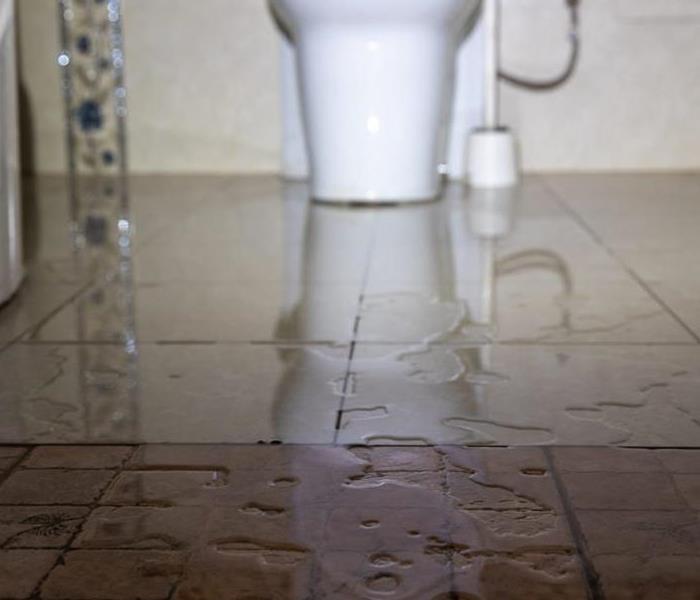 This picture is the bottom of a toilet and water on the fool around it
This picture is the bottom of a toilet and water on the fool around it
A running toilet can quickly become a costly problem. The U. S. Geological Survey estimates a single leaking toilet can waste an extra 22 gallons of water every day, adding up to over 8,000 lost gallons of water in a year. Even a small leak can mean hundreds of wasted dollars and thousands of gallons of wasted water.
How to Know If Your Toilet Is Leaking
The easiest way to know you have a leak is to listen. Many times, a running toilet will make a constant sound, even after you are done flushing. You can determine if your toilet’s tank is leaking by placing a few drops of food coloring in your tank water. If the color seeps into your toilet bowl when you are not flushing, you have a leak.
Why a Toilet Leak Is so Bad
Since your toilet uses the most water of any plumbing fixture in your home, even a small leak can equal a big loss of water. Here are the many risks from a leaking toilet:
Wasted Water
If you have more than one leaking toilet, the gallons of lost water can rapidly multiply. At a potential loss of 22 gallons of water per leaking toilet per day, hundreds of gallons of water may be wasted in a very short period of time.
Added Expense
A leaking toilet is literally money down the drain. If you notice your water bills rising and aren’t sure why, you may have a running toilet.
Annoying Noise
A constantly running toilet can quickly become a distracting annoyance, and spending time jiggling the hand hoping for a little silence is not how most of us would choose to spend our time.
Structural Damage to Your Home
If your toilet is leaking from the base, water can seep into your floors. Over time, this water can damage the structural support beneath and around your toilet and may lead to unsafe conditions in the floor of your bathroom.
Health Hazard
Just as leaking water can damage the structure of your home, even a small amount of water can lead to dangerous mold growth. If your toilet is leaking into your walls or floor, this mold can grow undetected, causing health concerns for you and your family.
If you suffer from water damage from a leaking toilet SERVPRO is here to help! We can make any size water damage Like it never even happened.
The Need to Knows About Water Ceiling Damage
10/3/2022 (Permalink)
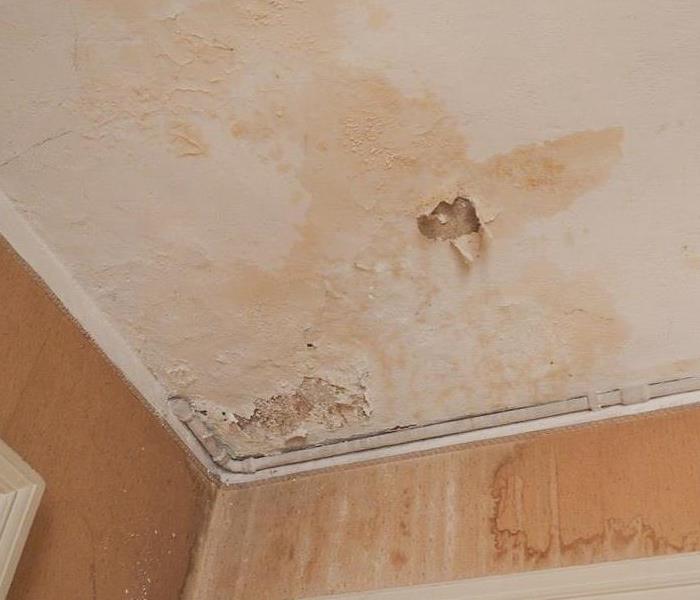 This picture is of a ceiling with water damage
This picture is of a ceiling with water damage
While water is life, it can cause some of the most devastating damage to your home. Natural disasters, pipe leakages and excessive rain are major causes of ceiling damage. Checking your ceiling for damage after these events helps you control repair costs. Identifying the damage early may help you avoid structural damage and mold infestation. It also helps to understand water damage restoration needed, depending on the damage.
What Are The Common Reasons for Water Damage To Your Ceiling?
Extreme weather
Storms, hurricanes, heavy rains, snow, and ice can damage your roof and ceiling.
Clogged gutters
Twigs, leaves, and granules can clog your gutters and direct water to your home. The water may seep through your walls or roof and damage the ceiling.
AC unit
Condensation from your AC unit could damage your ceiling. A clogged drainpipe or a full drain pan may leak into your ceiling.
Leaky pipes
Faulty pipes above your ceiling can wreak havoc in your home. The pipes could be drainage pipes, supply pipes to sinks and washing machines.
Sprinkler systems
Water from the slightest signs of a fire can cause extensive damage. Faulty sprinklers can also damage your ceiling.
What Does Water Damage On A Ceiling Look Like?
Brown patches
One of the most common water damage signs is brown patches on the ceiling. As the water spreads, the patch grows larger and spreads in layers.
Moldy patches
Mold is a clear sign of moisture problems in your home. If you notice green or black patches, you likely have a mold infestation. It's important to control the mold infestation immediately because mold causes health issues.
Swollen walls and door casings
Water may spread from the ceiling into the walls and doors. As the wood absorbs water, it begins to swell.
Decorative features separating from the walls
Water damage causes the wallpaper and trims to peel from walls. The paint may also buckle away from the affected area.
Sweating
You may notice beads of water along the wall or patches of water on the ceiling.
What Happens When The Ceiling Gets Wet?
It Looks Unattractive
Your plaster and drywall form brown patches and dirt lines as the water leaks. Decorative finishes such as paint, trims and wallpaper may begin to peel off. The ceiling may also bubble and sag, making it look unpleasant.
Mold Infestation
Brown and black patches on your ceiling may begin to develop shortly after some water damage. The mold and mildew can spread to the rest of your home through the HVAC system. People with allergies can develop respiratory problems after inhaling the mold.
Fire Hazard
Having water in your electrical wiring increases the risk of a fire hazard. It's vital to have a professional electrician confirm the extent of the damage.
Slip and Fall Accidents
A leak from your ceiling could form a puddle on the floor. The water puddles can create a fall risk for children and adults in the house, unaware of the situation.
Rising Utility Bills
Water affects the insulation's performance, which causes the power bills to rise. Your home's insulation may need complete water damage restoration.
How Do You Fix A Water Damaged Ceiling?
Once you discover a water-damaged ceiling, it's important to control the situation. You can try and fix the problem yourself or call an expert.
Prevent an Escalation
Water damage to your ceiling can spread to other parts of your home and damage your property. First, move your belongings and furniture away from the affected area. Then set up some pails to collect the water if it's dripping.
If the ceiling is drywall, it will absorb and spread the water. Getting a tarp is a great way to localize the leak. You can also use a sharp object to create a hole for the water to drip through. Controlling the water spread is also crucial to protect your insulation.
Hire a Contractor
Hiring a water damage restoration expert is the best way to understand the extent of your damage. The expert checks your ceiling and roof to determine if the damage is cosmetic or extensive. In the case of extensive damage, you need a complete ceiling replacement.
An expert can also help you track down the source of the leak for fixing. Water travels long distances from the source, especially if the roof is absorbent. A consultant can also estimate the ceiling water damage repair cost.
As you hire the contractor, hire an electrician to check your wiring. Any water in your electrical wiring poses a serious fire hazard. Water damage also affects your electric connections and equipment.
Dry the Moisture
Once you find the leak's source, it's time to dry the ceiling and any other affected structures. Ensure that you dry the air in the space to remove all moisture. Any moisture trapped in your ceiling can cause mold infestation and structural damage.
If the damage is extensive, call SERVPRO to air out the ceiling. SERVPROS team of water damage restoration expert can also clean the house. extensive cleaning is vital after a leak from contaminated and smelly water.
Replace the Ceiling
You can choose to go DIY or use SERVPRO to fix your ceiling. For cosmetic ceiling damage, you may plan and execute the ceiling replacement alone. It's essential to remember that replacing one part of the ceiling may affect its uniformity. It's best to change the entire ceiling in one room.
However, the entire process may be tedious and time-consuming. Hiring SERVPRO can relieve the burden of ceiling replacement. SERVPRO can check the entire ceiling for damage you might have missed. They can also complete the replacement quickly.
Get Professional Help for Ceiling Water Damage
Managing ceiling water damage is essential as soon as it happens. Hiring a professional is vital for quality repairs and immediate action. SERVPRO services are your go-to when you need professional water damage restoration. We also provide mold remediation and moisture control services. Reach out today for a free consultation and a quote on ceiling water damage repair cost.
For 24/7 response to your ceiling water damage, fast water damage restoration and a quote on your ceiling water damage repair costs, contact SERVPRO today.
What To Do If You Have a Busted Pipe
9/21/2022 (Permalink)
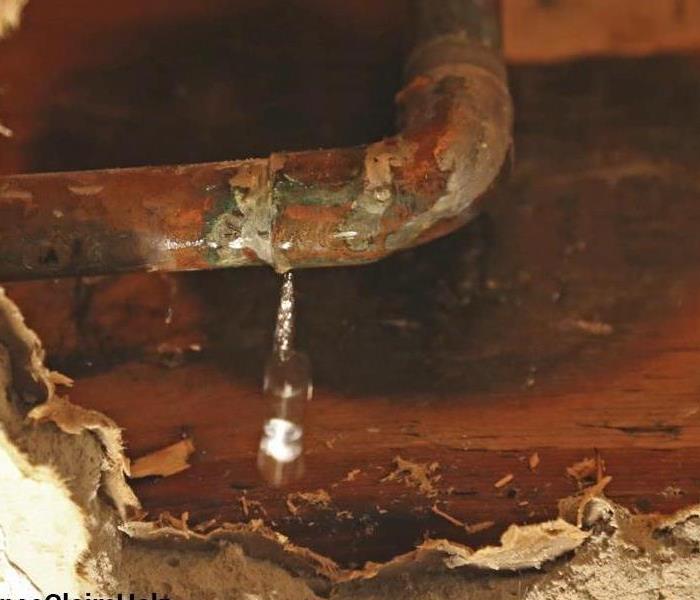 busted pipe leaking from the ceiling
busted pipe leaking from the ceiling
Homeowners wonder what to do when a burst pipe plagues their homes. Though the problem rarely happens, it’s important to know what to do when a pipe bursts somewhere in your home. Homeowners with no knowledge on the subject often face water damage to their floors, walls, and precious possessions.
Burst Pipe Causes
Several causes explain why a pipe bursts. Many factors come into play, but there are some common causes most homeowners experience from time to time. A burst pipe rarely happens overnight, so keep an eye on your plumbing system all year round. Here are some of the most common causes of pipe bursts.
Corrosion. Firstly, corrosion causes pipes to burst. Corrosion occurs because of imbalances in the water’s pH. Rust also causes a significant amount of corrosion. In either case, the corrosion happens over a long period of time until the pipe finally gives out. Rust and pH imbalances compromise the strength of the pipe, which leads to leaks and bursts. Rusty pipes are more common in homes with well water because the water usually has a higher concentration of iron.
Frozen. In places with harsh winters, frozen pipes are a large problem. When temperatures fall below 32 degrees, the water in the pipes freeze. This causes the bonds in the pipe to weaken, which leads to breaks. If the temperature rapidly increases—like when you turn on your hot water—the ice and the pipe shatter. If you experience long, cold winters, keep your home warm to avoid this issue.
Movement. Pipe movement occurs accidentally in most circumstances. Sometimes, pipes shift after winter because the cold temperature causes the pipes to contract. Other times, shifts occur because of repairs to other parts of the plumbing or if the water pressure becomes too high and shakes the pipes. A burst pipe occurs when this movement increases the water pressure in a certain area.
Clogs. Water pressure also increases because of clogs anywhere in the pipe. When the clog is close to the drain, they don’t cause too much trouble for the pipe system. However, if a clog forms deep in the pipe, the water pressure builds around the clog. Because the water has nowhere else to go, it leaks outside of the pipe. If the pressure becomes too great for the metal to handle, it results in a burst pipe.
Signs of a Burst Pipe
Homeowners often know when a pipe bursts because of large puddles of water in the home. However, there are other signs. These signs are harder to find if you don’t know what to look for. If you notice more than one of these issues, you definitely have a burst pipe on your hands. Check for these common indicators.
Puddles. If a puddle grows significantly when you turn on the water, it’s most likely a burst. Small drips usually indicate a leak. With a burst, the water pools under the pipes, but also moves through walls. For example, if you experience a burst under the bathroom sink, the area directly below collects the most water. However, the floor around the toilet and bathtub also has puddles if the pipe bursts. With a leak, the water likely stays under the sink.
Water pressure problems. Water pressure also indicates a problem because a burst affects how well water travels through the pipes. Low water pressure points to a burst or leak. With a burst pipe, water goes directly through the hole rather than the faucet, which lowers your water pressure.
Wall stains. Stains occur for a few reasons, but large water stains on walls usually indicate a problem with the pipes. These stains also appear on the ceiling. The location of the stain points to the place where the pipe burst in most cases. In that sense, wall stains are some of the more helpful indicators of a burst pipe because it’s easy to find where exactly the burst took place.
Discolored water. Discoloration of water also indicates a burst pipes. However, strange colors point to a number of other issues as well. For example, brownish water stems from high concentrations of manganese, but doesn’t necessarily mean the pipe burst. Still, reddish water usually indicates rust in the pipes, which does lead to bursts. Keep an eye on the color of your water and if any other signs appear.
High water bill. High water bills are often a sign of burst pipes. Excess amounts of water leak through the hole or break, which wastes water and adds to your bill. Additionally, because a burst affects water pressure, homeowners often have to use more water than normal to achieve satisfactory pressure.
Water smells. Smells from the water are also common indicators for a burst pipe. Though water smells arise for a multitude of reasons, a metallic smell in conjunction with the other symptoms on this list indicates pipe bursts. If rust causes the break, the water appears reddish and smells like metal.
Water sounds. Water sounds in the walls are another sign. If you hear a constant drip, but know all of your faucets are aren’t the cause, a pipe inside the wall is a likely cause for the noise. Additionally, check your other water fixtures before you assume a burst. Toilets, sinks, or tubs also make water noises from time to time. Eliminate those causes so you’re sure the pipes are the cause.
Pipe noises. Finally, metallic clangs and other pipe noises sometimes indicates pipe movement, which leads to leaks and bursts. The pipes often shake when water flows through them and there’s a break. In normal circumstances, homeowners rarely hear the water in the pipes, but a burst pipe moves more depending on the size of the break and where it is on the pipe.
Things to Do About a Burst Pipe
Homeowners have more control over pipe bursts than they think. While actual repairs must be left for professionals, there are some things you are able to do to minimize the water damage. These require little knowledge of plumbing and are quick ways to keep water from important items in your home. Before your plumber and restiration team arrives, implement these simple tricks.
Turn off main. Before anything else, turn off the water supply. You don’t want any new water in the pipe system when there is a burst. The water already in the system is much easier to deal with than any new water. Wait to turn the water back on until the plumber says you are able.
Call a plumber. Next, call a plumber. Do this as soon as you are able to keep the damage as minimal as possible. You never know when the plumber is able to come to your home, so call as soon as possible to keep the wait time down. The plumber diagnoses the cause, talks solutions, and fixes the problem. Preventative maintenance also prevents a burst pipe, so schedule maintenance visits throughout the year to keep this problem at bay.
Clean the water. Clear away any water quickly to avoid excess water damage. Some water damage is inevitable when a pipe bursts, but the sooner you clean the water, the less likely you experience irreparable damage to your possessions. Fast cleanup also ensures mold and mildew don’t grow. The longer the water stays, the more likely these substances are to grow, so clean and dry the area quickly.
Drain faucets. Drain your faucets to remove the water left in the system. Water removal takes some of the pressure off the pipes and ensures they’re dry so no more water leaks through. Flush toilets multiple times to drain the water out of those. Start with cold water, then move to hot water. Make sure the boiler or water heater is off when you do this.
Let in warm air. Frozen pipes must warm slowly to prevent further damage. To do this, turn up the heat in your home. If the heat still isn’t enough, use a hair dryer to warm the pipes. Though slow, this heats the pipes slow enough to prevent any more breaks. Drastic changes in temperature cause the pipe to burst.
Keep doors open. To circulate warm air, keep doors open. Rooms with exposed pipes need more air circulation to dry the pipes and the surrounding area. You want the pipes to dry as quickly as possible, so make sure air flows consistently. The warmer the air, the faster the water dries.
Repair sleeve. Repair sleeves temporarily fix a burst pipe. Slip the sleeve on the pipe to cover the hole or mend the break. For a short time, this keeps the water in the pipe so you are able to use your water throughout your home. However, this fix is temporary, so don’t use it for too long. Call a plumber to repair the pipe as soon as possible.
Rubber, wood piece, and clamp. Rubber, wood, and a clamp are also a way for homeowners to fix a burst pipe in the short-term. Place a piece of rubber on the burst area, cover it with a wood block, then clamp it all together. This keeps the water in the pipe for a short time. This methods doesn’t last as long as the sleeve, so only use it in cases of emergency. Immediately contact a plumber to fix the pipe.
Rather than face the aftermath of burst pipes, use these tips to combat water damage right as pipes burst. Not only does this lessen the damage, it ensures you don’t waste water, which keeps your water bill at a normal rate. If you do suffer water damager from a busted pipe call SERVPRO to mitigate and repair
What to do with a water heater leak
8/25/2022 (Permalink)
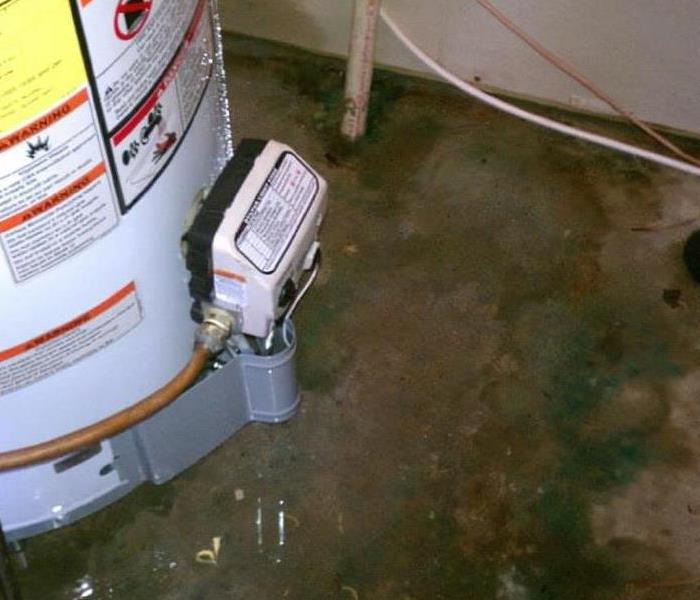 A water heater leak has caused damage and is in need of mitigation.
A water heater leak has caused damage and is in need of mitigation.
- Stay calm. The first step when any plumbing issue rears its head is to stay calm. ...
- Find the source of the leak. Is your heater leaking from the bottom or the top? ...
- Turn off the water. Once you locate the leak, you can work towards fixing it. ...
- Turn off the heater. ...
- Drain the water tank. ...
- Fix the leak, or call a plumber. ...
- CALL SERVPRO of Winston-Salem North and let us handle the mitigation and repair of any damage!!
Recent Flooding in Kentucky
8/13/2022 (Permalink)
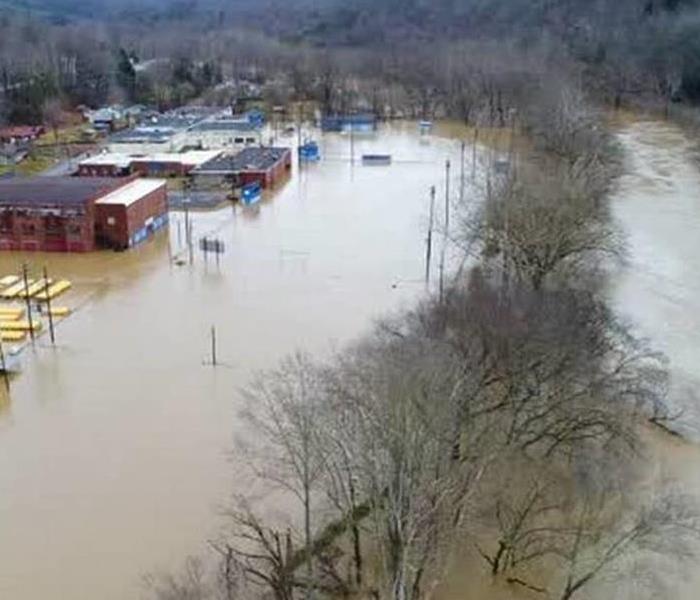 Flooding in Perry County, KY
Flooding in Perry County, KY
In the latest update from the Kentucky Transportation Cabinet, crews are working to repair state highways damaged in historic flooding in Breathitt and Perry counties last month. Four routes remain closed, and some of the closures are expected to be long-term.
Work is continuing to repair major breaks in the pavement on KY 451 in Perry County, KY 1110 in Breathitt County, and KY 1278 in Breathitt County. Daytime closures are in effect for KY 1110 while the work continues.
District 10’s sign crews have been busy installing warning signs to caution drivers of pavement breaks and slides. Drivers should heed these warning signs and watch for road damage, and yield to oncoming traffic in places where the pavement is reduced to one lane.
SERVPRO Storm Teams are working hard to mitigate damage and get folks back into their homes as quickly as possible!
3 steps to help with a flooded basement
8/8/2022 (Permalink)
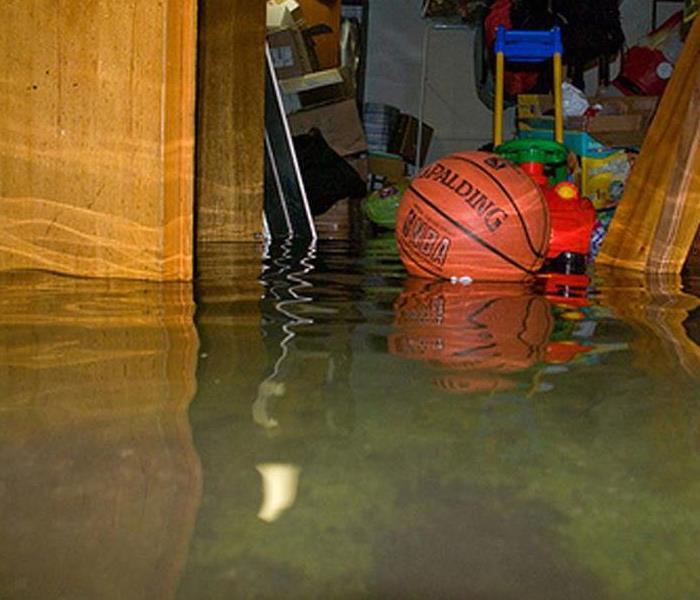 A basement is flooded and in need of Mitigation
A basement is flooded and in need of Mitigation
1. If at all possible, stop the source of the flooding first. The flooding could come from many sources. A broken water line or a bad water heater could cause your basement to flood. So could clogged or damaged gutters that enable water to pool up near the foundation. Cracked or damaged walls might allow water to seep in from outside during heavy rainstorms.
If water is leaking from inside your home, turn off your water main. If your basement is flooding from the outside, your options may be limited, but do what you can to prevent more water from coming into your basement.
No matter what the cause might be, the result is the same. You have a flooded basement that poses a threat to your family home and collective health. Immediate and effective water mitigation is needed to protect your basement and your health.
2. Call SERVPRO of Winston-Salem North!!!When your basement is flooded with water, time is not on your side. We recommend calling us right away, so we can dispatch someone to your home ASAP and begin pumping water out of your basement.
3. When your home suffers from water damage, you might be able to file a homeowners insurance claim for damages. If the claim is approved, your insurer might pay for the costs to repair your damaged home and furnishings. The claim also might help to pay for water mitigation services.
Check your ceilings for Water Damage
7/10/2022 (Permalink)
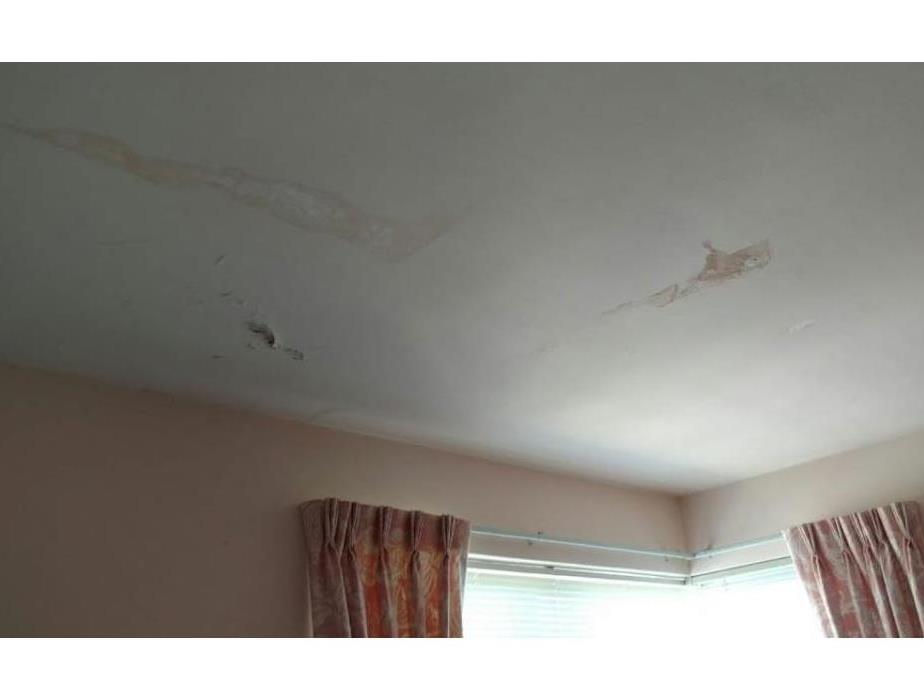 These are some obvious signs of water damage, most likely coming from pipes between floors or a leaking roof.
These are some obvious signs of water damage, most likely coming from pipes between floors or a leaking roof.
Have you looked at your ceiling and noticed discoloration, bubbling paint, or obvious signs of water?
These can be signs of leaks, or larger problems to come. Especially with all the rain we have been experiencing locally lately.
SERVPRO of Winston-Salem North will scope your home for free, checking for moisture issues and possible microbial growth. Call us today at (336)744-5104 to schedule a scope.
Common Causes of Water Damage
• Frozen, Burst, Broken, or Leaky Water Pipes
• Flooded Basements
• Overflowing Bathtubs, Toilets, or Sinks
• Clogged or Malfunctioning Drains
• Sewage or Septic Tank Backups
• Dishwasher or Washing Machine Overflows or Malfunctions
• Hot Water Tank Floods
• Crawl Space Water Damage
• Sump Pump Failures
• Leaking Roofs or Windows
• Flooding from Heavy Rain Storms
Third Floor Water Loss
6/30/2022 (Permalink)
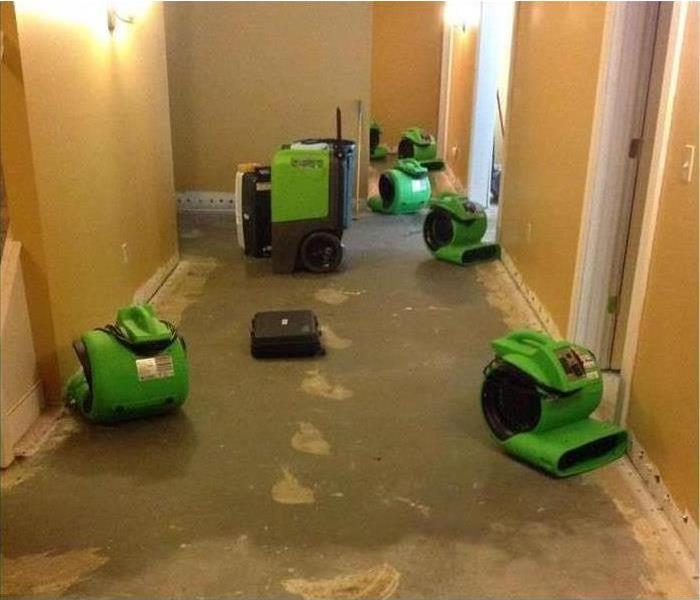 Air movers are set in a hallway to move air in certain directions for the fastest drying possible.
Air movers are set in a hallway to move air in certain directions for the fastest drying possible.
Recently SERVPRO of Winston-Salem North was called to a local retirement community for a water loss coming from a third floor condominium.
We never like to hear this because we know it effects more than just the one tenant. When there is a third floor water loss, where does the water go? All the way down till it finds the last thing it can wick in to. SERVPRO used our applied Science of drying to quickly mitigate all 3 levels, removing damp insulation, drywall, and drying everyone's condos out with 4 air movers in a vortex and a dehumidifier in each room, making the process extremely fast.
Do you have issues with any type of water around your home or business? Call (336)744-5104 for any questions or help you may need!
Response time
6/8/2022 (Permalink)
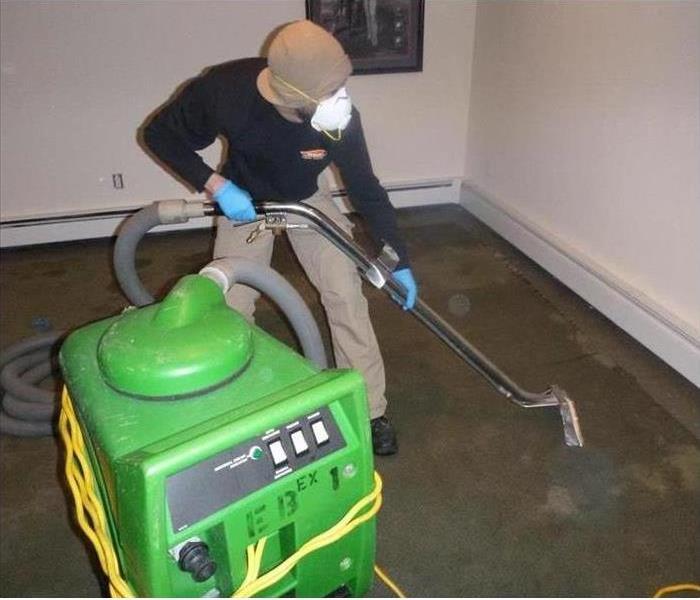 A SERVPRO technician uses an extractor to clean a water loss on a concrete floor.
A SERVPRO technician uses an extractor to clean a water loss on a concrete floor.
When it comes to water damage, response time and experience matter. Structural weakening, rot, and dangerous mold growth can occur if the problem isn’t solved quickly or properly. Allow the highly trained pros at SERVPRO to restore your property to its clean and dry state as quickly as possible. We know how stressful this situation can be, and we are here to help with everything from cleanup to dealing with your insurance company.
Is Water Damage Dangerous?
6/3/2022 (Permalink)
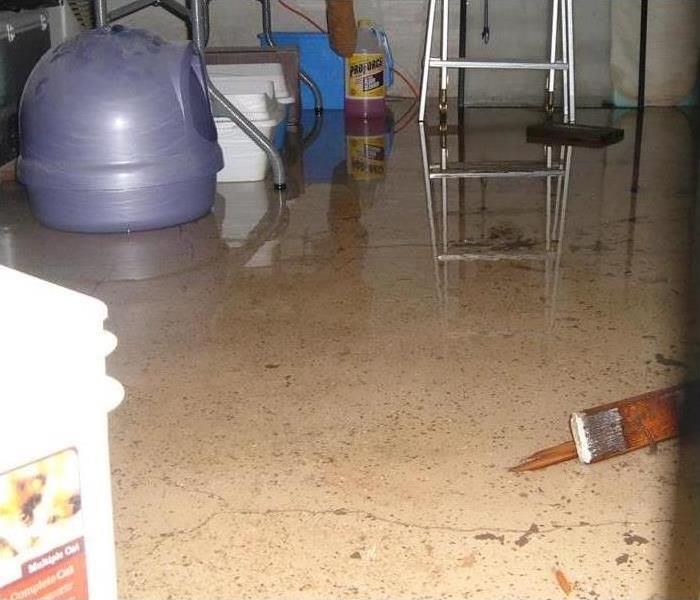 A water loss in a basement, could cause structural defects to your home.
A water loss in a basement, could cause structural defects to your home.
Water damage can be and is a serious situation. Water moving through your home or business can carry with it any contaminates that it has come into contact with. Electrical hazards are common when water damage has occurred, so do not enter the area until it’s deemed safe.
Mass amounts of water or contaminated water can also be a danger to anyone who comes into contact with it. It can be difficult to center on what the water contains, and could have chemicals, dirt or bacteria that carry common diseases within it. Also, depending on the size or amount of the water event, structural damage to the property could occur. Water damage may also make the area a harbor for mold and mildew.
Typical Commercial Water Loss Causes
10/4/2021 (Permalink)
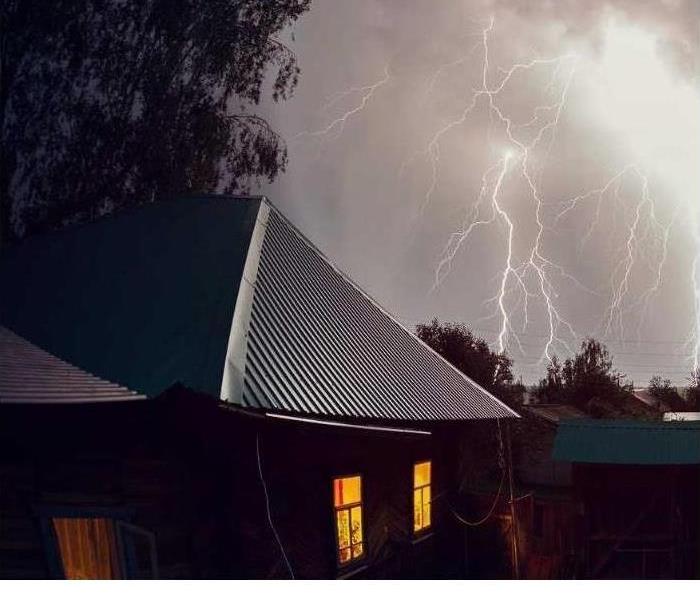 While we hope you never experience a disaster in your home, we do know we are ready to help you restore it in the event of one.
While we hope you never experience a disaster in your home, we do know we are ready to help you restore it in the event of one.
Commercial water losses cause extreme damage. To restore a commercial property to its originality will always involve insurance, and how long it may take varies. At SERVPRO of Winston Salem North, we want your business to be open, so we work as quickly as possible to repair and restore any damage done to your business. There are many causes of commercial water loss, and it is vital to the health and safety of the employees for action to be taken immediately if any signs of a water loss are found. The most common water loss causes in a commercial building are damaged window seals, damaged pipes, cracked foundations, inadequate drainage systems, roof leaks, HVAC leaks, sewage backups, and sprinkler system damages or malfunctions. If these damages are left sitting for too long, it could cause mold and mildew growth, which is harmful. If you notice any of these issues, call SERVPRO of Winston Salem North. We can connect you to the right subcontractor if necessary and dry any water damage and restore the building “Like it never even happened.”
Wind damage can lead to water damage
10/4/2021 (Permalink)
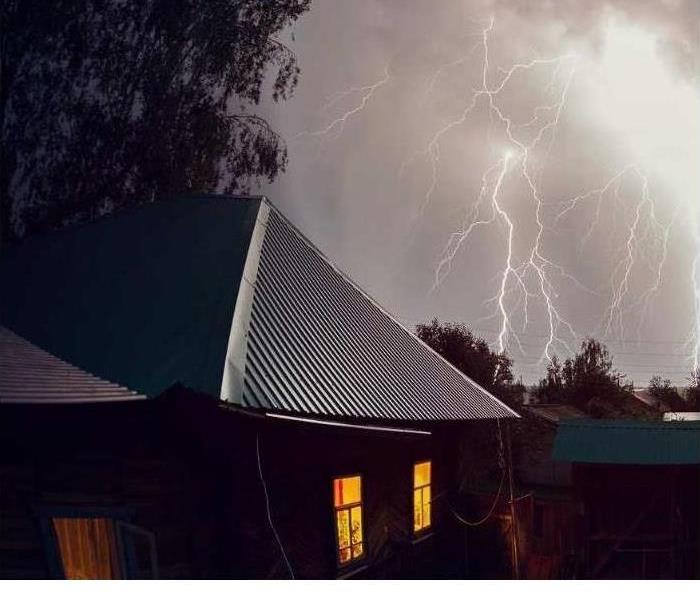 While we hope you never experience a disaster in your home, we do know we are ready to help you restore it in the event of one.
While we hope you never experience a disaster in your home, we do know we are ready to help you restore it in the event of one.
When Lanie Pope says to expect “damaging winds” from a storm she is forecasting, what does she mean exactly? And what does it mean to you a home or business owner? Damaging winds are classified as those exceeding 50-60 mph. Often, called “straight-line” winds to differentiate the damage they cause from tornado damage. Wind damage can lead to a roof leak and could be covered by insurance depending on your policy.
This type of damage can come from a number of different processes. Most thunderstorm winds that cause damage to the ground are a result of outflow generated by a thunderstorm downdraft. Damage from severe thunderstorm winds accounts for half of all severe reports in the lower 48 states and is more common than damage from tornadoes or hail. Wind speeds can reach up to 100 mph and can produce a damage path extending for hundreds of miles.
Who is at risk from damaging winds? Anyone living in thunderstorm-prone areas of the world is at risk of experiencing this hazard. But, people living in mobile homes are especially at risk for injury and death. Even anchored mobile homes can be seriously damaged when winds gust over 80 mph.
SERVPRO of Winston Salem North can help with water damage inside your home or business. For disaster recovery services related to a storm call us directly at 336-744-5104
Indoor Flooding
9/27/2021 (Permalink)
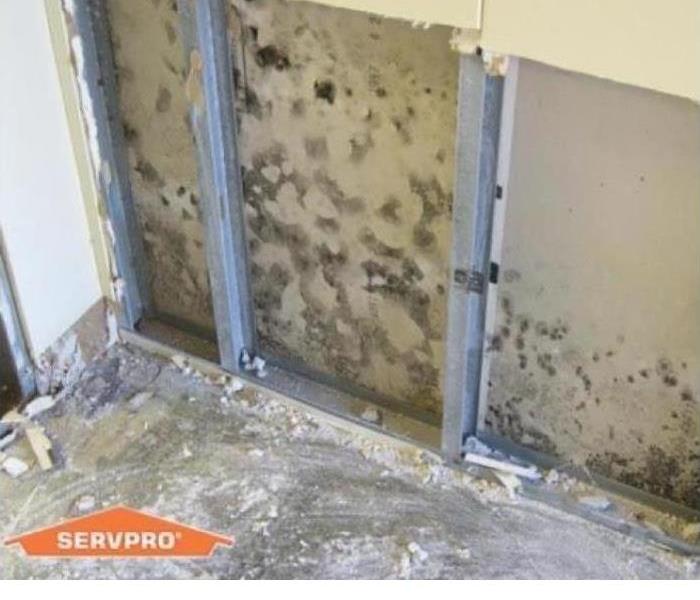 While we hope you never experience a disaster in your home or business, we do know we are ready to help you restore it in the event of one
While we hope you never experience a disaster in your home or business, we do know we are ready to help you restore it in the event of one
So, What Causes Indoor Flooding?
Water damage usually has one major leading cause: indoor flooding. Some of the most common causes of indoor flooding are:
- Leaky or Broken Pipes: The most obvious cause of indoor flooding is leaky or broken water pipes. Pipes can burst from changes in water pressure or even a faulty setup, but regardless of the cause, pipe problems often cause a ton of damage. Leaky pipes are usually a warning sign of more problems to come. Hidden floods caused by broken pipes in your walls can even create the perfect environment for microbial growth.
- Faulty Washing Machine Hose: The most common problem with watching machines are faulty hoses. A leak in your intake hose can worsen over time and can cause flooding in your home.
- Water Heaters: Even a small leak in your water heater can cause major flooding due to its endless flow of water. Make sure to inspect your water heater on a regular basis, keeping up with maintenance to ensure it doesn’t spring a leak.
- Clogged Sewer or Drain Lines: The flow of water to and from your house can be disrupted when you have clogged sewer or drain lines. Some clogs might be benign, allowing for a slow drain that is merely an inconvenience. But those clogs can get worse over time. The clog can cause your sinks, toilets, and showers to overflow with water, resulting in major damage. This can even include backed-up sewage, causing a hazardous environment for anyone or anything that comes in contact with the affected water.
If you find flooding inside your home, call us and we will be there to help.
The Right Equipment Is Necessary!
8/30/2021 (Permalink)
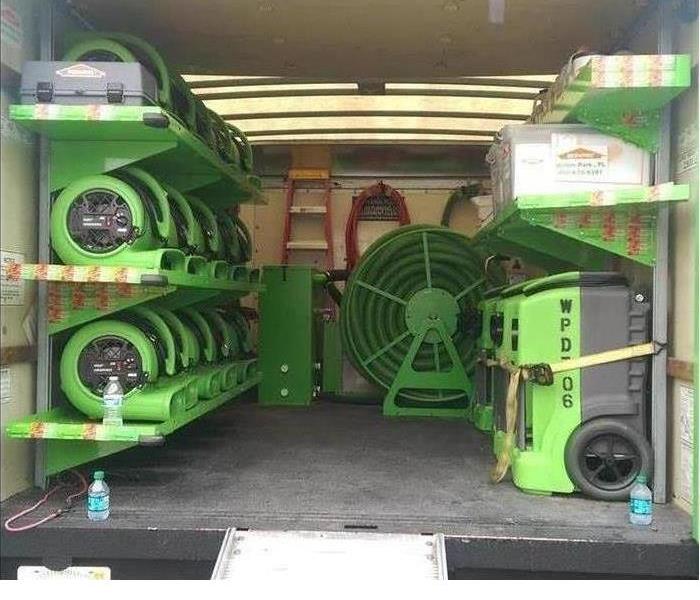 While we hope you never experience a disaster in your home, we do know we are ready to help you restore it in the event of one
While we hope you never experience a disaster in your home, we do know we are ready to help you restore it in the event of one
SERVPRO of Winston Salem North knows that using the proper equipment makes a difference. When time matters and it does when reducing claim loss expense, you can count on us to have the right technology and equipment to get the job done.
For example, one of the most common losses is water loss. Here is some information on the drying process.
Psychrometrics is the study of the air and its properties. The properties of temperature, humidity, and vapor pressure. Dew points are measured to evaluate air conditions in the structure. These measurements allow for SERVPRO of Washington County to create the proper atmosphere for the most effective drying.
There is a science to drying everything properly.
The detection equipment used is always the most current in the industry.
Moisture Sensors, Moisture Meters, Thermo-hygrometers, Infrared Cameras, and Manometers are some of the detection equipment.
Extraction Equipment, Air Moving Equipment, Dehumidification Equipment, Deodorization Equipment are all used in the drying process.
When it comes to drying we take it seriously
Supply Lines
8/16/2021 (Permalink)
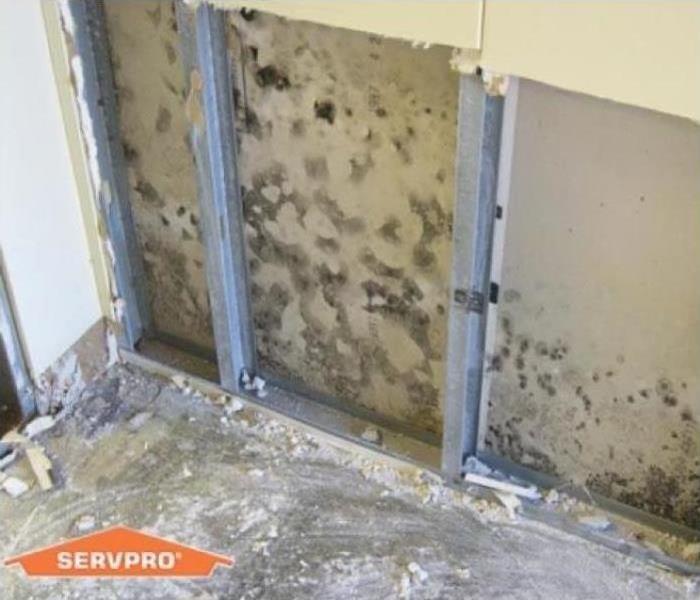 While we hope you never experience a disaster in your home or business, we do know we are ready to help you restore it in the event of one
While we hope you never experience a disaster in your home or business, we do know we are ready to help you restore it in the event of one
We recently had a water loss come in from the supply lines of a refrigerator. The homeowner had asked what he could have done to prevent this from happening. The short answer is to simply replace your supply lines about every five years according to the industry standard.
Now to go into more detail the warranty on your appliances is five years. However, the warranty on your supply lines is only a year. So, our advice to you is to change your supply lines about once a year but it could be between 1-5 years. Supply lines are made up of two different materials. You have a copper supply line where they use pressure fittings to pressure fit it to the back of the appliance. You also have one that is a rubber hose with a mesh outside to try and keep it from splitting and causing problems.
Here at SERVPRO of Winston Salem North, we do this to educate our customers. We want our customers to learn the maintenance in their homes but also want them to know we are here when disaster strikes.
What To Expect When We Arrive
8/4/2021 (Permalink)
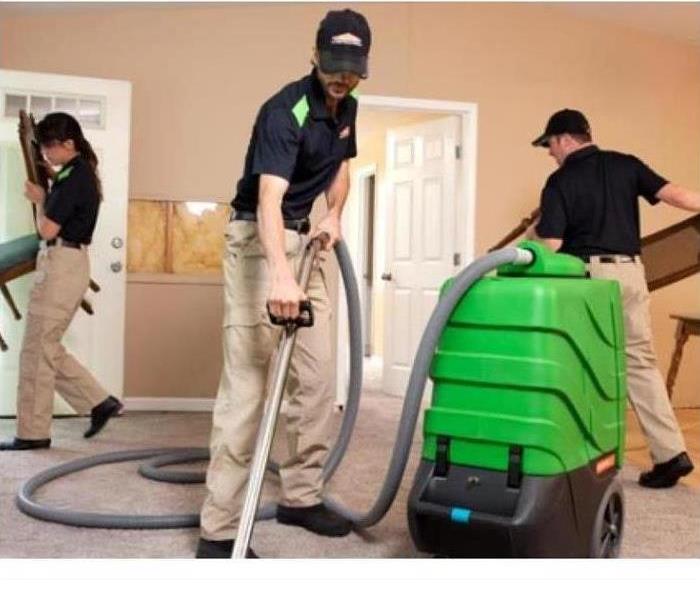 While we hope you never experience a disaster in your home, we do know we are ready to help you restore it in the event of one
While we hope you never experience a disaster in your home, we do know we are ready to help you restore it in the event of one
When a customer calls in the event of a disaster in their home we do our very best to ensure them we will be there every step of the way and we will get their home put back together quickly and diligently. We will work with our customers on priorities and order of events that need to happen to allow their life to go back to normal as soon as possible.
We will get our crew out on site and they will begin by going over paperwork with the customer. The crew will now be able to begin extracting any water that needs to be before starting demo on items not salvageable. The crew will set equipment to prevent any more damage and to professionally dry the structure. The crew will monitor the drying process and will pick up equipment when the structure dries to standard. Once the drying and mitigation is completed we can help you move on to the next phase, the restoration process. This is when we will work with you and help guide you to put your home back together. Let us know if we can help you in a difficult time and make it "Like it never even happened." We are always here to help.
How Should You Handle Water Damage In Your Home?
7/12/2021 (Permalink)
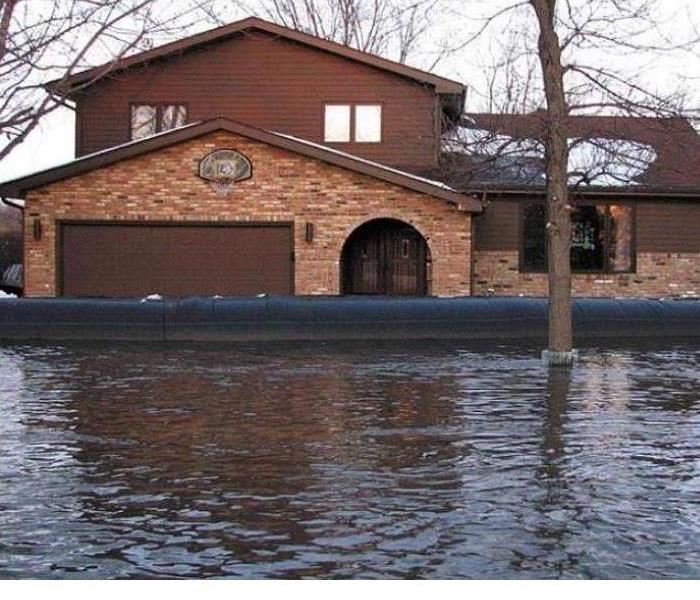 While we hope you never experience a disaster in your home or business, we do know we are ready to help you restore it in the event of one
While we hope you never experience a disaster in your home or business, we do know we are ready to help you restore it in the event of one
Water damage in your home can be frustrating but it does not have to be difficult. Our team has a few simple and easy steps to simplify the process before we arrive.
- Locate where the water damage has occurred in your home.
- Find the water shut off in your home and cut the water off.
- Call your insurance company and inform them of the damage.
-Call SERVPRO of Winston Salem North for extraction, mitigation, and reconstruction.
- Our team is available 24/7. Day or night. Call us at (336) 744-5104
We are HERE TO HELP
Our crew lives by the 1-4-8 protocol: an after-hours emergency code to keep our customer's damage from escalating and providing a plan of action for mitigation.
1- Guaranteed call back within one hour.
4- The crew will arrive on the scene within four hours of the initial call.
8- Written plan of action for mitigation.
We understand that when our customers call us, they are usually not having the best day. This is why our crew not only arrives with professionalism and experience but also with a level-headed mentality as we work to bring calm into the chaos.
Why You Should Call A Professional
6/29/2021 (Permalink)
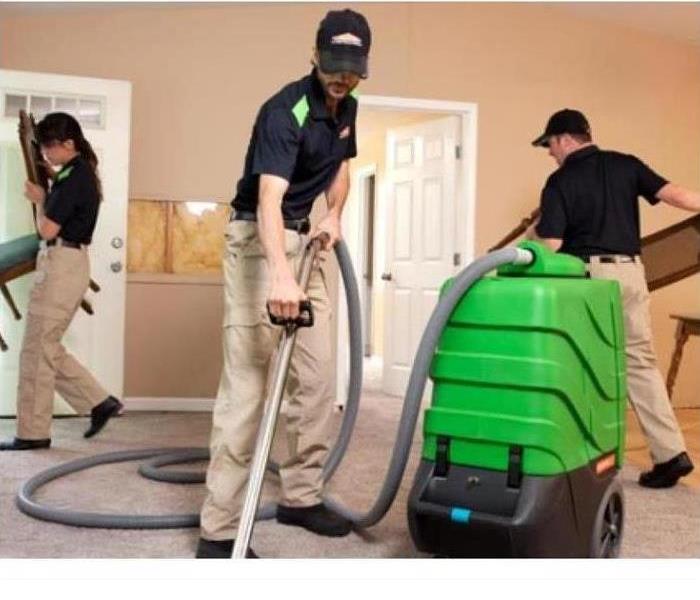 SERVPRO of Winston Salem North
(336) 744-5104
SERVPRO of Winston Salem North
(336) 744-5104
When something traumatic happens to your home it is very important you know what you should do. Here at SERVPRO of Winston Salem North we understand that it can be very stressful and overwhelming. We strive to do our very best to ensure our customers are satisfied and can understand what we are doing and why it is important.
There is a lot of important reasons as to why you should call professionals. I am going to use water damage for this example. We get a lot of water loss jobs and unfortunately it is a common event that happens in homes from time to time. We want you to understand why it is important to call us.
-Even if it looks dry, it may still be wet.We know your first instinct will be to try and clean the water up. However, not everything can be soaked up with a towel!
-We have a plan.We want you to be happy with our work! So we will have a thought out plan on how to put your house back together including everything from the demolition to repair process.
-We have the right equipment.We have professional drying equipment specialized to dry out walls and floors.
-We help prevent bacteria growth.The water has a high chance of being contaminated after being filtered through all the building equipment in your home.
- We help save your possessions.Any of your contents that are affected by a loss we can bring to our shop where we ensure it gets cleaned properly.
We hate these traumatic event happens to our customers but we strive to ensure they get the best services!
What To Do During A Flash Flood
6/14/2021 (Permalink)
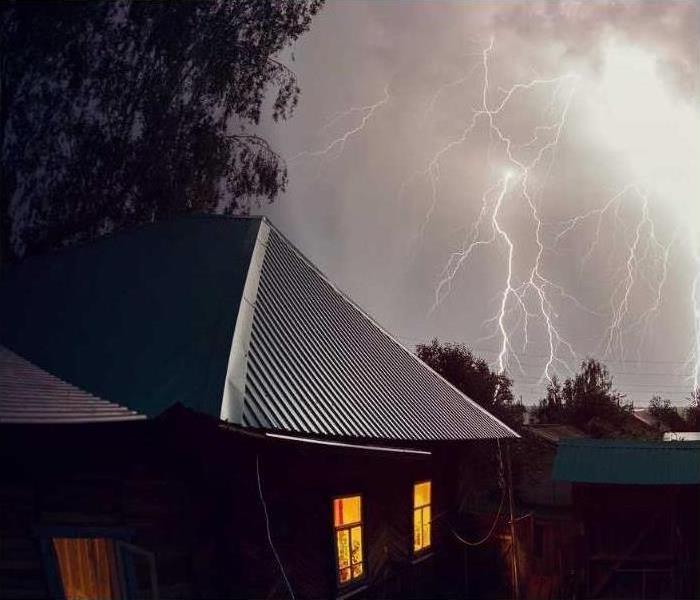 Know what to do and who to call!
Know what to do and who to call!
Flash floods happen... and they happen FAST. Here lately especially, we have been getting late afternoon thunder storms that bring a lot of rain. In situations like this you should be educated on how to protect yourself and your home.
First and foremost you need to be aware. Watch the forecast to know when and where it is coming.
Try to avoid driving to keep yourself safe. It can be very dangerous. Its hard to see and there is a lot of standing water you need to watch out for... "Turn around, Don't drowned" !!
Seal any cracks in your foundation of your home.
Be sure your gutters are cleaned out. This will prevent damage to your roof.
Take precautions before buying home. Know if you are in a flood hazard or not so you know in advance how you need to prepare.
To prevent damage to the outside of the house make sure you are bringing in anything that could blow around and break a window for instance.
The most important in my opinion is just that you are aware of any of this before it happens. Life happens and your home may flood. That's why SERVPRO of Winston Salem North is HERE TO HELP.
Tips That Can Help Prevent Water Damage In Your Home!
6/7/2021 (Permalink)
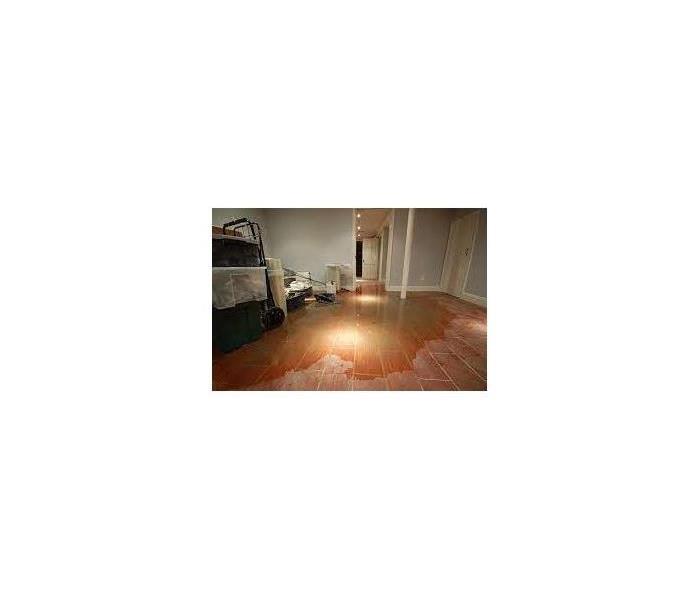 Know what do to and who to call in the event that something happens like this happens in your home !
Know what do to and who to call in the event that something happens like this happens in your home !
Buying a home is a huge investment, it's probably the biggest purchase most people make in their lifetime. Going into buying a home you need to be thinking about how you have to keep up the maintenance and in the event something happens you know what to do and who to call.
Water damage is a big loss people unfortunately deal with in homes from time to time. There is some things you can actually do to help prevent it.
- Make sure you are keeping your gutters cleaned out to keep standing water from damaging your roof.
- Know where your main shut offs are in your home.
- Monitor your water bill. If one month its extremely high, you may have a leak some where.
- Consider getting a leak detector.
- Fix any small leaks now so they do not get out of hand!
Here at SERVPRO of Winston Salem North we want you to be prepared if something happens and we also want you to know you can call us anytime and we will be there to help.
Protecting your business from flooding.
10/1/2020 (Permalink)
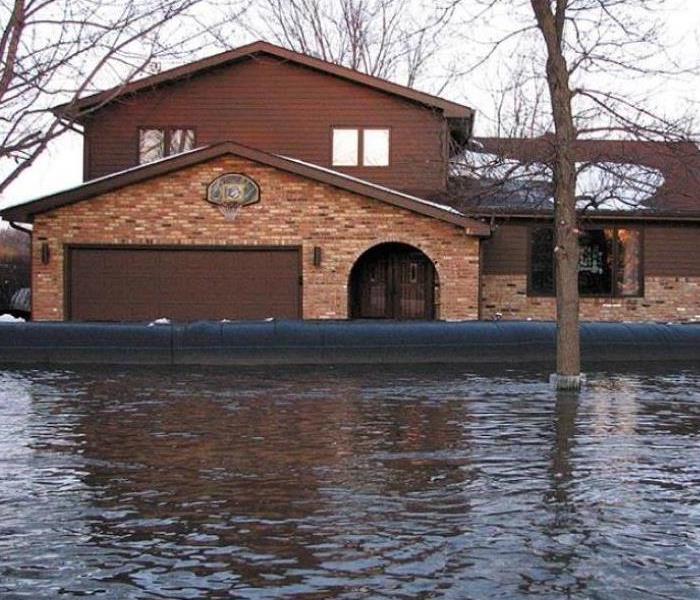 While we hope you never experience a disaster in your home or business, we do know we are ready to help you restore it in the event of one
While we hope you never experience a disaster in your home or business, we do know we are ready to help you restore it in the event of one
At SERVPRO of Winston Salem North, we understand that your business is important to you. Our restoration professionals work hard to help restore homes and businesses in our local community daily. We are equipped with the expertise and technology to restore your property from any size disaster. However, there are steps you can take on your own to prevent damages to your business.
- Start with a thorough risk analysis. Plan for emergencies and obtain insurance coverage that will cover your business in the event of a flood. Consider any damages to property as well.
- Pay attention to weather alerts in your area.
- Ensure that all gutters are inspected and clear of dirt and debris regularly.
- Install barriers to prevent water from getting inside.
- Use flood-resistant materials in any new construction to your business.
- Relocate your files to a safe location, and back them up.
These measures will protect your business in the event of flooding and drastically minimize the damages to your commercial property.
Grease should never go down the drain
10/1/2020 (Permalink)
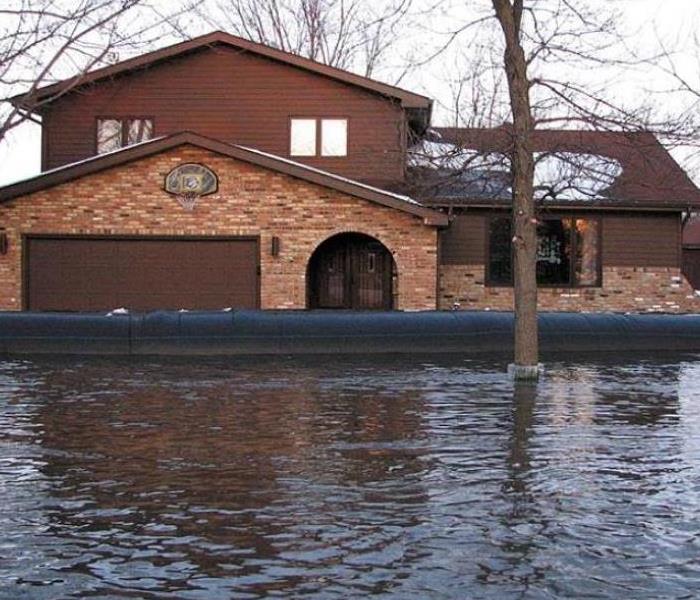 While we hope you never experience a disaster in your home or business, we do know we are ready to help you restore it in the event of one
While we hope you never experience a disaster in your home or business, we do know we are ready to help you restore it in the event of one
The fats in the grease and oil from your kitchen mix with the other chemicals in the sewers and form nasty conglomerations of chemicals that can build up and block the pipes that take our dirty water to the wastewater treatment plant.
When you pour grease into your sink it's just the beginning of its travels. The grease and oil head down your pipes and into the sewers where they meet up with all the other wastewater from the area. Here is where the nastiness starts.
The fats in the grease get broken down into their component parts — fatty acids and glycerol. These fatty acids bind calcium found in the sewers — created from biological processes including the corrosion of concrete — to create a "soap" compound. While it's called a "soap" because of its chemical composition, this isn't something you'd want to wash yourself with.
When you do accidentally get some grease in your pipes, you can go ahead and wash it out using boiling water and a mixture of vinegar and baking soda. This will help push it out of your pipes, though it will still be able to coagulate in the main water system.
The best plan is not to let any grease get down the drain if you don't want the sewer coming out of your faucet.
What can water really do?
9/11/2020 (Permalink)
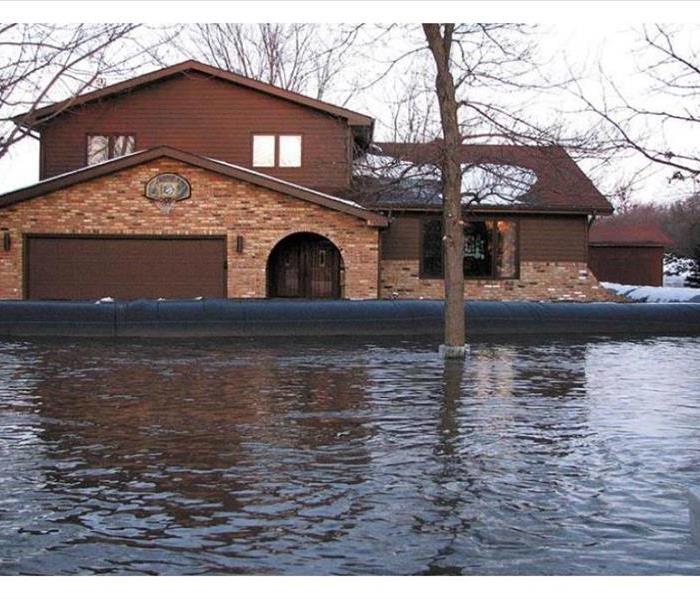 While we hope you never experience a disaster in your home, we do know we are ready to help you restore it in the event of one
While we hope you never experience a disaster in your home, we do know we are ready to help you restore it in the event of one
What kind of damage can water really do?
You probably just had an amazing vacation, let's pretend Hawaii because I've always wanted to go there. You just spent two weeks in the fun and sun in Honolulu. Blissfully listening to the water as the waves crash around you. Unbeknownst to you, your house has also been listening to the steady, Drip Drip Drip of a faulty main supply line to the upstairs bathroom toilet. Two weeks of dripping water can cause quite a bit of damage to its surroundings. I visited a home today, where this exact scenario has already taken place.
Quick rundown of damages
- Bathroom Floor, wet and moldy down to the plywood flooring
- Bathroom Linen Closet / Extra Storage , Everything inside was COVERED in various molds
- Drywall, every bit of drywall and baseboards in the bathroom were wet and soggy.
- Master bedroom, Carpet and flooring all wet and moldy
- Downstairs Dining room, because of being underneath the upstairs master bathroom, it sustained water and mold damage to the ceiling, wall and flooring.
- Finished Basement, the water made it through 2 other floors and ruined the ceiling and wall underneath the dining room.
- All of the Insulation, Drywall, Flooring will need to be removed and replaced from the affected rooms.
- Mold had sprouted in just about every room, and the HVAC system was just covered in it.
Water is a force of nature
All that damage from a steady drip of water over a span of 2 weeks. Coming home from paradise, to a disaster like this is pretty heartbreaking. You will not be able to stay in your home, It could be quite hazardous to your health. The floor and walls could be structurally unsound. This extensive project is not for the faint of heart, and would be way more than a typical weekend DIY project. Lucky for you, SERVPRO of Winston-Salem North is on call 24/7 and We are the WATER and MOLD Specialist in the area. We will make it "Like it never even happened," so that you can go back to those blissful memories of that wonderful vacation you took.
While we hope you never experience a disaster in your home, we do know we are ready to help you restore it in the event of one. Just give us a call any time 24/7 we are always here to help.
CLICK TO CONTACT NOW
OR
SERVPRO of Winston Salem North
1105 Fairchild rd,
Winston Salem, NC 27101
Phone: (336) 744-5104
Email: sp9743@yahoo.com
Fax Number: (336) 744-5105
Flooding Can Happen Anytime, Make Sure You Are Protected.
9/11/2020 (Permalink)
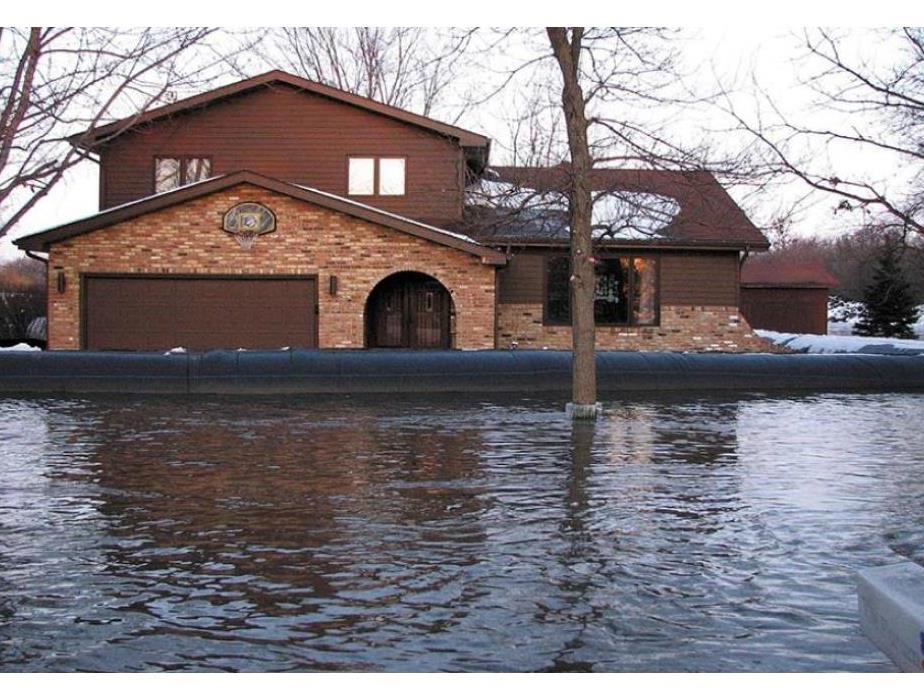 While we hope you never experience a disaster in your home, we do know we are ready to help you restore it in the event of one
While we hope you never experience a disaster in your home, we do know we are ready to help you restore it in the event of one
At SERVPRO of Winston Salem North, we understand that your business is important to you. Our restoration professionals work hard to help restore homes and businesses in our local community daily. We are equipped with the expertise and technology to restore your property from any size disaster. However, there are steps you can take on your own to prevent damages to your business.
- Start with a thorough risk analysis. Plan for emergencies and obtain insurance coverage that will cover your business in the event of a flood. Consider any damages to property as well.
- Pay attention to weather alerts in your area.
- Ensure that all gutters are inspected and clear of dirt and debris regularly.
- Install barriers to prevent water from getting inside.
- Use flood-resistant materials in any new construction to your business.
- Relocate your files to a safe location, and back them up.
These measures will protect your business in the event of flooding and drastically minimize the damages to your commercial property.
While we hope you never experience a disaster in your home, we do know we are ready to help you restore it in the event of one. Just give us a call any time 24/7 we are always here to help.
CLICK TO CONTACT NOW
OR
SERVPRO of Winston Salem North
1105 Fairchild rd,
Winston Salem, NC 27101
Phone: (336) 744-5104
Email: sp9743@yahoo.com
Fax Number: (336) 744-5105
How to protect your home against Ice and Snow
9/11/2020 (Permalink)
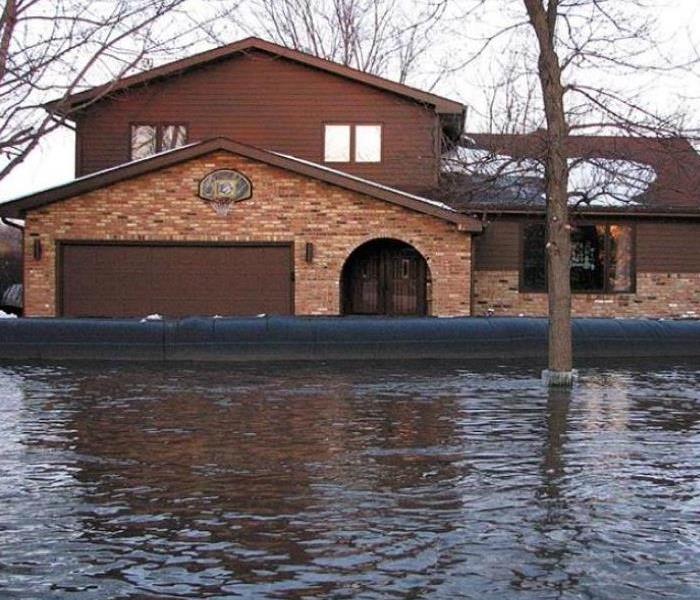 While we hope you never experience a disaster in your home, we do know we are ready to help you restore it in the event of one.
While we hope you never experience a disaster in your home, we do know we are ready to help you restore it in the event of one.
The Triad is in for a blast of wintery weather and we’ve got a quick list of some simple things you can do to protect your home.
- Sealing up any Drafty Windows and doors
The natural gaps that occur around windows and doors can make it difficult to keep your house warm. Using caulk or weather stripping to seal these areas will help. In some of the older historic homes of Ardmore and Washington Park, windows may be constructed of single-pane glass and the doors are constructed without modern day insulation. Investing in updating those areas might be something to look at in the future.
- Protect Water Pipes in Uninsulated Areas
- Keep that attic cool
Believe it or not, you should not be heating your attic the same way you heat your home. Snow and Ice Dams can ruin your roofing and lead to all sorts of issues. To keep your attic cool, make sure it is properly ventilated and seal any holes or cracks in your ceiling leading to the attic. - Clean out the gutters and downspouts around your home.
While we hope you never experience a disaster in your home, we do know we are ready to help you restore it in the event of one. Just give us a call any time 24/7 we are always here to help.
CLICK TO CONTACT NOW
OR
SERVPRO of Winston Salem North
1105 Fairchild rd,
Winston Salem, NC 27101
Phone: (336) 744-5104
Email: sp9743@yahoo.com
Fax Number: (336) 744-5105
Torrential Downpours bring Potential Water Damage
9/11/2020 (Permalink)
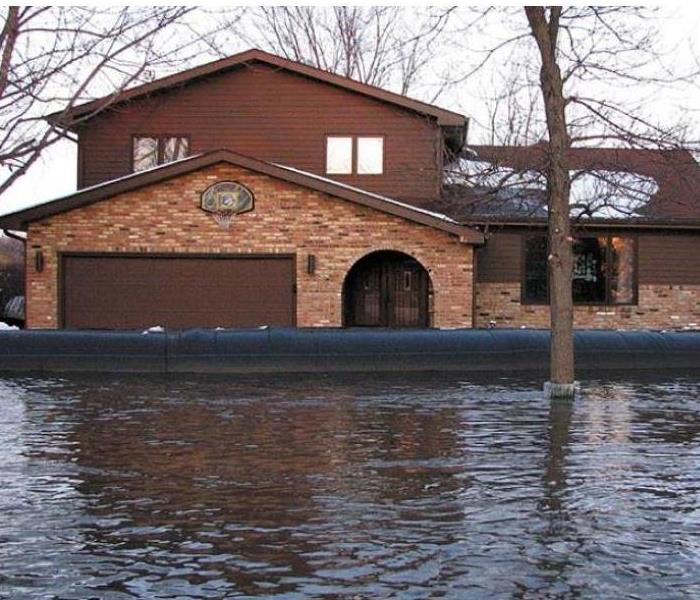 While we hope you never experience a disaster in your home, we do know we are ready to help you restore it in the event of one
While we hope you never experience a disaster in your home, we do know we are ready to help you restore it in the event of one
Flooding and water emergencies don’t wait for regular business hours and neither do we. SERVPRO of Winston Salem North provides emergency restoration services 24 hours a day, 7 days a week—including all holidays.
Faster To Any Size Disaster
Flooding and water damage is very invasive. Water quickly spreads throughout your home and gets absorbed into floors, walls, furniture, and more. SERVPRO of Winston Salem North arrives quickly and starts the water extraction process almost immediately. When minutes matter, this immediate response helps to minimize the damage and the cleaning and restoration costs.
Need Emergency Service? Call Us 24/7 – 336-744-5104
Water Damage Timeline
Within Minutes
- Water quickly spreads throughout your property, saturating everything in its path.
- Water is absorbed into walls, floors, upholstery, and belongings.
- Furniture finishes may bleed, causing permanent staining on carpets.
- Photographs, books, and other paper goods start to swell and warp.
Hours 1 - 24:
- Drywall begins to swell and break down.
- Metal surfaces begin to tarnish.
- Furniture begins to swell and crack.
- Dyes and inks from cloth and paper goods spread and stain.
- A musty odor appears.
48 Hours to 1 Week:
- Mold and mildew may grow and spread.
- Doors, windows, and studs swell and warp.
- Metal begins to rust and corrode.
- Furniture warps and shows signs of mold.
- Paint begins to blister.
- Wood flooring swells and warps.
- Serious biohazard contamination is possible.
More Than 1 Week:
- Restoration time and cost increase dramatically; replacing contaminated materials and structural rebuilding may be extensive.
- Structural safety, mold growth, and biohazard contaminants pose serious risks to occupants.
While we hope you never experience a disaster in your home, we do know we are ready to help you restore it in the event of one. Just give us a call any time 24/7 we are always here to help.
CLICK TO CONTACT NOW
OR
SERVPRO of Winston Salem North
1105 Fairchild rd,
Winston Salem, NC 27101
Phone: (336) 744-5104
Email: sp9743@yahoo.com
Fax Number: (336) 744-5105
 Don't hesitate to contact SERVPRO of Winston Salem North for prompt assistance and restoration services.
Don't hesitate to contact SERVPRO of Winston Salem North for prompt assistance and restoration services.






 24/7 Emergency Service
24/7 Emergency Service

























